Can I Use Intel Processor on AMD Motherboard?
If you have just found a sweet deal on an Intel CPU and you wondering if you can use it with an AMD motherboard you already own, then unfortunately you will be disappointed.
The short and simple answer to the question “can I use intel processor on AMD motherboard?” is a resounding no. It is not possible to use an Intel CPU with an AMD motherboard.
Both the AMD and Intel CPUs and motherboard have sockets and chipsets designed for their respective series of processors.
Hence, even if you physically try, you will fail to plug an Intel CPU into an AMD motherboard.
CPUs are perhaps the only component that is not compatible across the brands. The rest of components such as graphics cards, hard drives, RAM sticks are all cross compatible with different brands.
In the following text I will talk in detail about why you cannot use Intel processor with an AMD motherboard (or vice versa). I will talk about three very basic reasons:
- The physical characteristics of Intel and AMD CPUs are different
- Motherboard for Intel and AMD have different CPU sockets
- The motherboard chipset is incompatible across brands
TABLE OF CONTENTS
1. Physical Characteristics of Intel and AMD CPUs are Different
The physical profile, the dimensions, the pin count as well as the surface mount technology of AMD and Intel CPU is entirely different.
In others words, even at the basic physical level, they would not be compatible with their rival’s motherboards.
Intel Uses LGA for Most of Its CPUs
Pin Grid Array processors (with needles sticking out) Left; and Land Grid Array (with flat contacts) Right
Intel CPUs for desktops are almost all based around the Land Grid Array (LGA) arrangement.
In other words, instead of having pins on the CPU surface, LGA CPUs have pads called lands.
AMD Uses PGA for Most of Its CPUs
AMD, on the other hand, uses Pin Grid Array surface mount technology for most of its Ryzen series CPU. Albeit AMD is adopting LGA for 7000 series desktop CPUs.
Albeit AMD is adopting LGA for 7000 series desktop CPUs.
The point of this discussion is that AMD and Intel CPUs are inheritably different physically. If you have any misconception about all CPUs being the same, then this should dispel that. CPU are NOT all same.
CPUs have Different Pin/Land Count
PGA CPUs are primarily used for AMD AM4 CPUs.
The number of pins or lands that you see on an Intel or AMD CPU vary drastically from generation to generation with the same brand.
For instance the Intel LGA 1200 based 10th and 11th gen CPUs have 1200 pins, the Intel LGA 1700 based 12th Gen CPUs have 1700 pins.
AMD AM4 socket has 1331 pins, the AM5 socket has 1718 pin.
In other words, even if you were to upgrade from one Intel or AMD CPU to another, you may need to change the motherboard. Let alone replacing an AMD CPU with an Intel.
Also Read: How Many Pins Does a CPU Have?
2.
 The Motherboards CPU Socket is Different for Intel and AMD CPUs
The Motherboards CPU Socket is Different for Intel and AMD CPUs
Another point closely related to the first point is that the motherboard socket for Intel and AMD CPUs are completely different.
A motherboard’s CPU socket is the placeholder where the CPU plugs into. Given that dimensions and the physical characteristics of AMD and Intel CPUs are different, you cannot use an Intel processor on an AMD motherboard.
CPU for AMD and Intel differs drastically.
Read in Detail: How to Check CPU Compatibility with Motherboard?
3. The Motherboard Chipsets is Different Across Brands
Both Intel and AMD motherboards use completely different chipsets. A Chipset is basically the main controller of the motherboard and it determines, among a plethora of other feature, whether a certain CPU is compatible with the motherboard or not.
For instance, the 11th Gen Intel CPUs require a motherboard with the Intel Z590, H570, B550 or the H510 chipsets.
AMD 5000 series require motherboards with AMD X570, B550 or the A520 chipsets.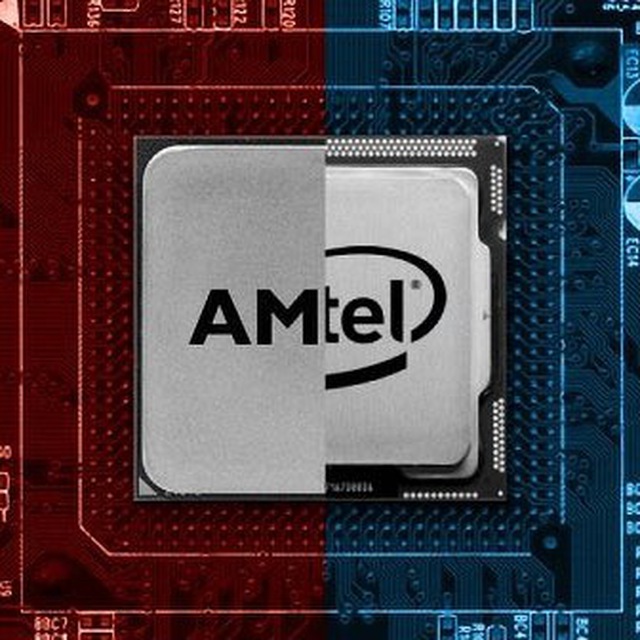
Motherboard and CPUs Compatibility List
The following tables lists down the motherboard chipsets the different AMD and Intel CPUs are compatible with:
| Manufacturer | Chipset | Socket | CPU |
|---|---|---|---|
| Intel | Z690 | LGA 1700 | 12th Gen Intel CPUs |
| H670 | LGA 1700 | 12th Gen Intel CPUs | |
| B660 | LGA 1700 | 12th Gen Intel CPUs | |
| H610 | LGA 1700 | 12th Gen Intel CPUs | |
| Z590 | LGA 1200 | 11th and 10th Gen Intel Gen | |
| Z490 | LGA 1200 | 11th and 10th Gen Intel Gen | |
| Z390 | LGA 1151 | 8th and 9th Gen Intel CPUs | |
| B560 | LGA 1200 | 11th and 10th Gen Intel Gen | |
| B460 | LGA 1200 | 11th and 10th Gen Intel Gen | |
| B360 | LGA 1151 | 8th and 9th Gen Intel CPUs | |
| H570 | LGA 1200 | 11th and 10th Gen Intel Gen | |
| H510 | LGA 1200 | 11th and 10th Gen Intel Gen | |
| X299 | LGA 2066 | X Series 10000 | |
| AMD | X570 | AM4 | Ryzen 1st, 2nd, 3rd, 4th, 5th Gen |
| B550 | AM4 | Ryzen 1st, 2nd, 3rd, 4th, 5th Gen | |
| A520 | AM4 | Ryzen 1st, 2nd, 3rd, 4th, 5th Gen | |
| TRX40 | sTRX4 | 3rd Gen Threadripper CPUs |
Again, AMD and Intel chipsets are proprietary to their brand.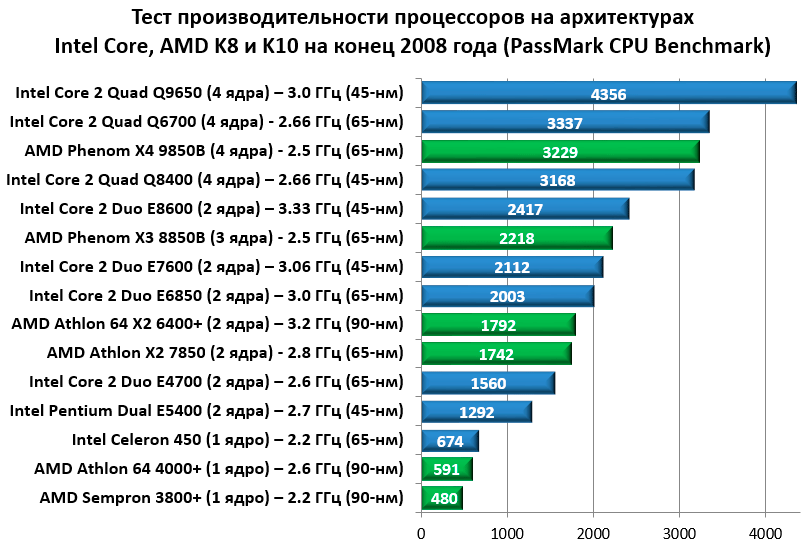
So Can I Use Intel Processor on AMD Motherboard?
Again, reiterating the point, not only can you NOT use an Intel CPU with an AMD motherboard, sometimes when upgrading a CPU from the same brand, you may need to change the motherboard.
For instance, when changing from LGA1200 based Intel 11th Gen CPU to LGA1700 based Intel 12th gen CPU, you would need to change the motherboard.
Also Read: Computer Not Starting After Installing New Graphics Cards – How to Fix?
FAQ
What Happens if You Put an Intel Processor in an AMD Socket?
You physically cannot put an Intel Processor on AMD socket. Not only are the dimensions of the CPUs different, the Intel processor will not even come in contact with the socket itself.
AM4 socket
Take for instance the AMD socket. This socket has holes intended for a PGA CPU with pins that slide into these holes.
If you were to place an Intel CPU, which are LGA based and have flat pads on the bottom, they will simply not come in contact with any electrical terminal at all to establish any sort of connection with the motherboard.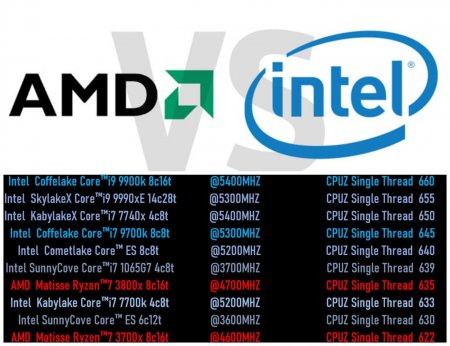
Can I Put an AMD Processor Into an Intel Motherboard?
Just as you cannot plug an Intel CPU into an AMD motherboard, the opposite is also true. You cannot plug an AMD processor into an Intel motherboard due to the same reasons as explained above.
Also Read: Can You Use AMD GPU with Intel CPU?
AMD vs. INTEL | IT & Engineering Staffing Insights
Intel vs. AMD – PC Processing Power and Preference
As the two master companies continue to do battle for market share, I wanted to provide some insight that may be helpful in choosing what works best for you. Are both capable? Yes. Do both have their own pluses and minuses? Yes. The point of the article is to give you enough information to make a smart decision. I personally tend to lean towards Intel because of personal experience with both. Keep in mind, I will be focusing primarily on the consumer market of purchases.
Let’s start with AMD’s Consumer grade Processors that come in the form of 2, 4, & 8 cores.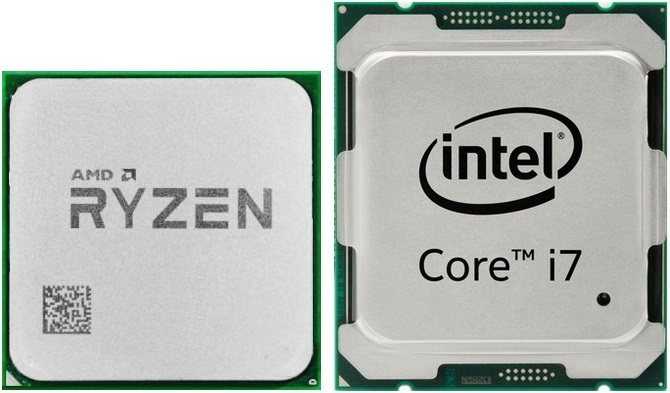 AMD’s products are notoriously known for being less expensive when compared to the Intel’s products. You can easily obtain a solid 4 –core processor from AMD at $200 or below. That 4-core will run just about everything on the market. AMD has also done an excellent job of making their processors easier to work with from an Overclocking (The ability to make your processor go beyond is stock clock speed). For example, let’s use the FX-8350 Black Edition 4.0GHZ processor which is an 8 core processor with a boosted .2 GHZ of clock speed. This is one if not the most popular processor in AMD’s current consumer products. AMD enthusiasts will bring to the table that with 8 cores of processing power that Intel simply can’t compete. While I tend to agree with Raw Power, the FX-8350 tends to have stability issues. In addition, AMD’s drivers for their chips have been notoriously bad for years. The drivers have a tendency to overlay older drivers vs. deleting the old and performing a fresh install. This is my biggest complaint with AMD.
AMD’s products are notoriously known for being less expensive when compared to the Intel’s products. You can easily obtain a solid 4 –core processor from AMD at $200 or below. That 4-core will run just about everything on the market. AMD has also done an excellent job of making their processors easier to work with from an Overclocking (The ability to make your processor go beyond is stock clock speed). For example, let’s use the FX-8350 Black Edition 4.0GHZ processor which is an 8 core processor with a boosted .2 GHZ of clock speed. This is one if not the most popular processor in AMD’s current consumer products. AMD enthusiasts will bring to the table that with 8 cores of processing power that Intel simply can’t compete. While I tend to agree with Raw Power, the FX-8350 tends to have stability issues. In addition, AMD’s drivers for their chips have been notoriously bad for years. The drivers have a tendency to overlay older drivers vs. deleting the old and performing a fresh install. This is my biggest complaint with AMD.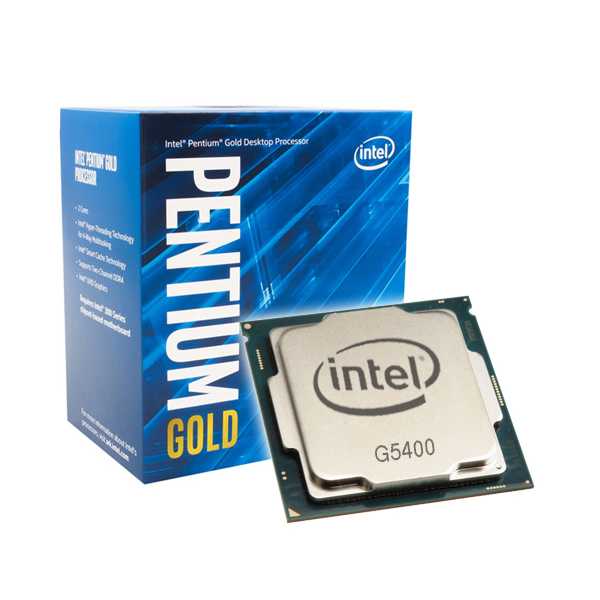
Intel’s chips are at times drastically more expensive but provide an unmatched level of performance and stability. I recently built a new personal PC and used the first line of Intel’s new “Devils Canyon” processors. I used an i7 4790k which is a 4 core 4.0 GHZ with a .4 GHZ boost. Now on the surface you may ask why I went with a 4-core that is almost 70% more expensive for only .2GHZ of turbo clock speed vs. going for the AMD 8-core? This is where things can get a little tricky. As mentioned above, my preference towards Intel tends to lie with my personal experience being better using Intel. You’ll notice that Intel chips that some processors come with a “K” in the description. The K means that the processor is fully unlocked meaning that the potential for stable overclocks is entirely in your hands. Unlike AMD, Intel gives you the opportunity to maximize the potential of your chip. While I would typically say that 8-cores is better than 4-cores, in most cases the capability to use 8 cores of processing power hasn’t been maximized with technology yet.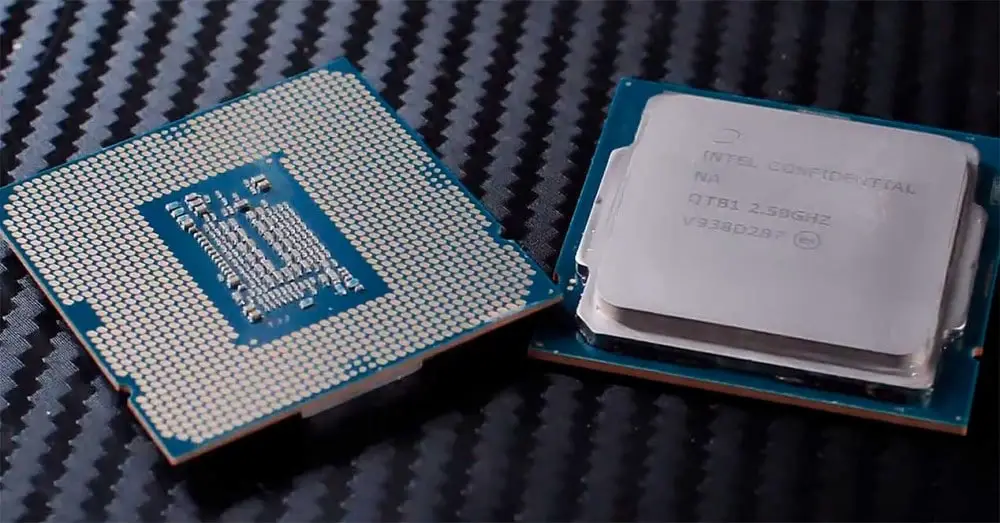 Most consumer grade builds aren’t capable of running 8 cores simultaneously. This is where Intel’s stability truly becomes a factor and they are capable of maximizing the 4 cores to run much faster than the 8 cores because the tasks aren’t being spread so thin providing better stability!
Most consumer grade builds aren’t capable of running 8 cores simultaneously. This is where Intel’s stability truly becomes a factor and they are capable of maximizing the 4 cores to run much faster than the 8 cores because the tasks aren’t being spread so thin providing better stability!
In the end, this is just an opinion article towards my preference to Intel processor’s vs. AMD’s. I’ve listed my current build below for your review. If nothing else, you can now make a more educated decision when looking for a new PC. This is surface level information and I could go on for days regarding Stability, Compatibility, etc. however, this should at least give you at least a good starting point.
My most recent build
*Motherboard — ASUS – Z97-A
*Processor – i7 – 4970K (Running at 5.0 GHZ Overclocked)
*Power Supply – Rosewill – 750 W Modular PSU (Gold Rated)
*RAM – 16 Gigs of Corsair Vengence (DDR3)
*Video Card – Nvidea 780 Ti (Fermi) 3 GB
*Hard Drive – (SSD) 1 Samsung 250 GB EVO (Boot Drive) / (HDD) 1 WD 1 TB: Black Series
*Case – Corsair Air 540
*Disk Drive — ASUS DVD/CD Rewritable
*Operating System – Windows 8. 1 64-bit
1 64-bit
*Cooling – Corsair Hydro h200i (water) & 6 x 120mm SP Quiet Edition Fans (air)
What if not Intel or AMD? Alternative architectures of central processing units / Sudo Null IT News
When it comes to processors, what brands immediately come to mind? Of course, first of all, Intel and the newly gaining popularity of AMD. In the context of consumer CPUs, the struggle usually takes place between them, although ARM chips have recently been trying to keep up. But this does not mean at all that the CPU space is limited to them.
From high-end PC ARMs to specialized government chips, there are many more CPU manufacturers around the world that we don’t normally hear about. Who are they? What are the characteristics of their processors? What are they for? Now we’ll figure it out.
M1: ARM for PCs
Historically, x86 versus ARM has been primarily a rivalry between Intel and mobile processor architectures. The very name of the x86 architecture comes from Intel chips with model indexes ending in this number: 8086, 80186, and so on.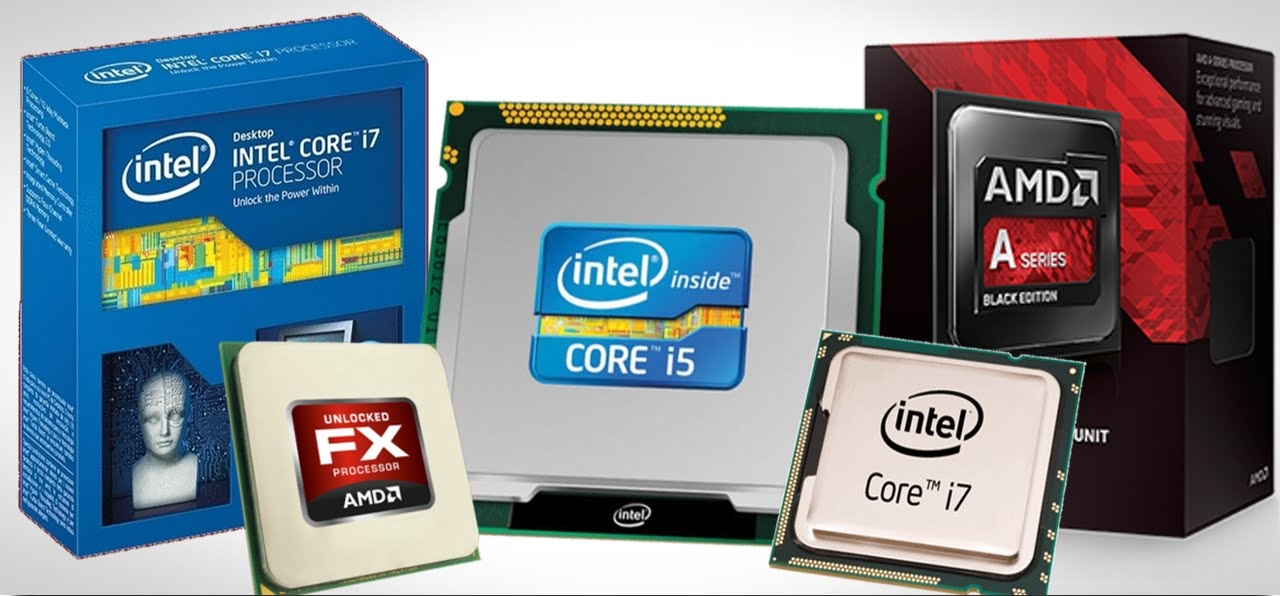 For a long time, x86 and ARM target devices practically did not intersect: one architecture occupied a niche of almost strictly “large” computers, the other was intended for mobile devices.
For a long time, x86 and ARM target devices practically did not intersect: one architecture occupied a niche of almost strictly “large” computers, the other was intended for mobile devices.
But lately the dominance of Intel and x86 in the PC market has been shaken. Last year, Apple released new MacBooks that were identical in appearance to the previous generation based on Intel, but this time the revolutionary M1 chips of their own production were inside the laptops.
The Apple M1 is built using 5nm technology and is based on a redesigned ARM architecture. From this point of view, the M1 has more in common with the iPhone’s A14 Bionic processor than it does with AMD’s or Intel’s x86 mobile components. Such a system-on-a-chip is compact, energy-efficient, and does not require much cooling, but it can actually outperform Intel Comet Lake in some applications.
Over the next few years, Apple plans to completely phase out Intel chips. Of course, given that masOS’s share of the PC market is less than 7%, Apple Silicon components won’t replace x86-based chips. But, probably, they will add food for thought to other manufacturers regarding the applicability of ARM on a PC. Following the M1, we should probably expect changes in products such as the Samsung Galaxy Book S and Qualcomm 8cx.
But, probably, they will add food for thought to other manufacturers regarding the applicability of ARM on a PC. Following the M1, we should probably expect changes in products such as the Samsung Galaxy Book S and Qualcomm 8cx.
ARM on PC is still in the early stages of development and use. However, in five years, chips made by other than Intel and AMD may become commonplace in desktops and laptops. And in the vast majority of them, it may be ARM chips.
Zhaoxin: Chinese alternative to AMD and Intel for the lower price segment
So, ARM is starting to master the space of PCs and data centers more confidently. But what about x86 manufacturers — who, if not AMD or Intel?
Only a few companies have x86 licenses: Intel, AMD, VIA, and DMP Electronics. DMP is a Taiwanese company responsible for the Vortex86 line of embedded chips used in set-top boxes and the industrial sector. But there is also the Chinese market, which, moreover, seeks to obtain maximum autonomy from the American one — and VIA is just one of them.
Once upon a time in the 2000s, VIA produced not only processors, but also video cards, and did it very successfully. But over time, it was strongly pushed by Intel and AMD, so in 2013, together with the Shanghai municipal government, it organized the Zhaoxin company. Zhaoxin is owned by the Chinese government, so it has full control over the development and production of chips — which, by the way, are manufactured at TSMC factories. VIA continues to own a minority stake in Zhaoxin and, most importantly, provides an x86 license allowing Zhaoxin to build its own desktop processors.
Zhaoxin’s first solutions were not particularly popular, but starting with the KX-U6780A, the situation has changed.
Source: https://www.techpowerup.com/forums/threads/zhaoxin-kaixian-kx-6000-series-kx-u6880-3-0ghz-thread.248683/
Zhaoxin Kaixian processors are based on 16nm process technology . The company’s flagship, KX-U6880A, is an 8-core chip based on Lujiazui’s own architecture, equipped with 8 MB of L3 cache and clocked at 3.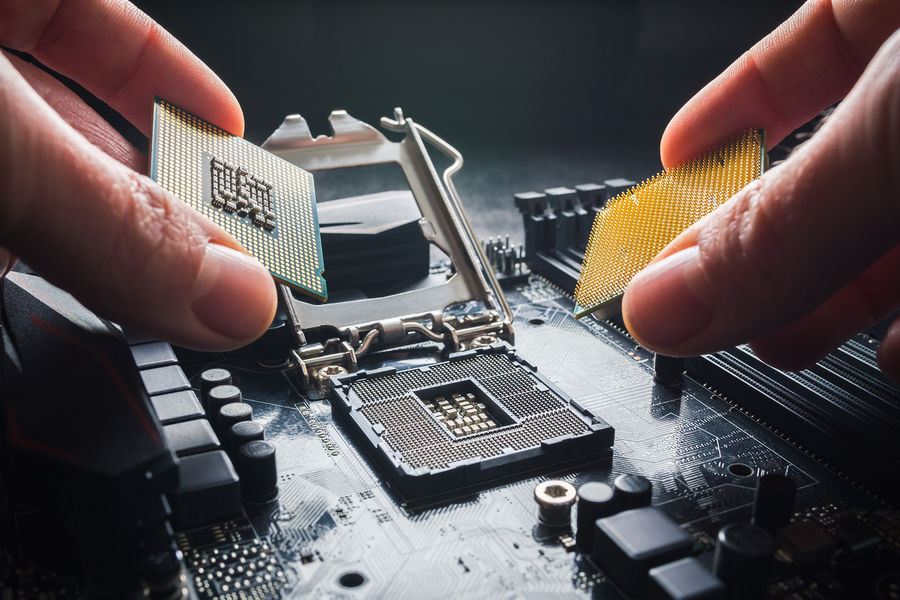 0 GHz. The chip also contains controllers for 16 PCI Express 3.0 lanes, USB and SATA, which allows you to connect, say, an Nvidia RTX 2080 Ti to it.
0 GHz. The chip also contains controllers for 16 PCI Express 3.0 lanes, USB and SATA, which allows you to connect, say, an Nvidia RTX 2080 Ti to it.
Sounds pretty good, but when it comes to benchmarks, the results aren’t exactly bad, but they aren’t the best either: The U6880A has a performance level similar to the AMD A10-9700 APU quad-core processor. However, this power is enough to provide frame rates above 30 FPS in titles such as Hitman 3 and Far Cry 5.
new architecture and use DDR5 and PCI Express 4.0 interface. All of this opens the door to higher clock speeds and greater efficiency. It is not known how much this will help improve performance compared to Alder Lake and Zen 4. However, Zhaoxin chips are a good and — importantly — commercially available Chinese x86 alternative that will easily handle most common workloads.
Hygon Dhyana — the same AMD, only from China
China actively encourages the development of its own production and is not very friendly to imports. That is why many companies have to spin to cover this part of the market. So, in 2016, AMD signed an agreement with Hygon to provide access to the documentation of its Zen architecture in order to establish local production of CPUs based on it.
That is why many companies have to spin to cover this part of the market. So, in 2016, AMD signed an agreement with Hygon to provide access to the documentation of its Zen architecture in order to establish local production of CPUs based on it.
Hygor Dhyana processors are the result of this collaboration. These are almost complete copies of AMD Ryzen and first-generation EPICs based on the Zen 1 architecture, although not quite: for example, a Chinese-made cryptographic engine is used inside these chips, many instructions are cut off and there is no multithreading. Judging purely by the characteristics, we can say that the 8-core Hygon Dhyana is located somewhere between the 6-core Ryzen 5 1600X and the 8-core Ryzen 7 1800X.
Source: https://www.ixbt.com/news/2020/02/27/na-chto-sposobny-kitajskie-klony-processorov-amd.html
When it comes to performance, things are much more complicated. In some applications — for example, in rendering tasks — Hygon processors perform quite well, but in others they are very deplorable. This is especially true for floating point calculations. Obviously, AMD did not begin to give complete documentation on the architecture.
This is especially true for floating point calculations. Obviously, AMD did not begin to give complete documentation on the architecture.
At the same time, according to Zen 2 and Zen 3, the Chinese have nothing at all. It would seem that this should have meant a dead end branch in development, but no: the release of the next generation of Hygon processors is still expected. Samsung and TSMC plan to manufacture them using the 7nm process technology — about 500 engineers were hired specifically for this.
Source: https://linustechtips.com/topic/1164248-about-chinese-cpu-中科海光-hygon/
Elbrus — domestically produced processors there is a lot of controversy. Opinions cover a wide range depending on the application — but the truth, as usual, is not here and not there, but somewhere in between.
It should be noted that the Elbrus architecture is neither x86 nor ARM. These chips are based on VLIW, which differs in that each of its instructions contains several parallel operations — this makes VLIW even closer to the GPU, not the CPU. It would seem that this should mean that adapting the usual software for it is a very non-trivial task. In fact, such an architecture has a dynamic x86 binary translator similar to that of the Apple M1, which greatly simplifies the launch of programs familiar to us. But this also determines the fact that the performance is the same as that of Intel and AMD, in this case, you should not expect from Elbrus.
It would seem that this should mean that adapting the usual software for it is a very non-trivial task. In fact, such an architecture has a dynamic x86 binary translator similar to that of the Apple M1, which greatly simplifies the launch of programs familiar to us. But this also determines the fact that the performance is the same as that of Intel and AMD, in this case, you should not expect from Elbrus.
What then in terms of performance? Take, for example, the 2016 Elbrus-8S1, manufactured using a 28-nm process technology and having 8 cores with a frequency of 1.2 GHz. According to tests, in the «natural» habitat, when working with special distributions of Linux, it can perform about 3500 million operations per second. Taking into account the configuration and year of manufacture, it should be noted that this is not bad at all.
Source: https://www.cnews.ru/news/top/2020-02-27_serververnye_elbrusy_priblizilis
Just a few months ago, MCST presented Elbrus 16S. It’s a 16nm chip, clocked at 2. 0GHz and capable of up to 1.5 teraflops of computing. Interestingly, Elbrus-16S supports four-processor implementations with up to 16 TB of RAM, which is impossible even on the top hardware of AMD and Intel servers.
0GHz and capable of up to 1.5 teraflops of computing. Interestingly, Elbrus-16S supports four-processor implementations with up to 16 TB of RAM, which is impossible even on the top hardware of AMD and Intel servers.
Source: https://servernews.ru/1032777
But what about the development of Elbrus on user PCs? Given the complexity of adaptation and the considerable cost on the market, the chances that the history of computers with such processors will receive a long-term continuation are very small: most likely, Elbrus will remain a working tool for government servers and equipment for the military.
POWER — processors from IBM
Once back in the 2000s, processors from IBM were actively used in the so-called Power Macs. But since 2005, Apple has switched to Intel chips — which, however, does not mean at all that IBM has stopped producing its own CPUs.
For example, the Xbox 360 used a processor based on the Power architecture. But even when Microsoft ditched IBM chips on Xbox One, the company didn’t stop making its own chips, but now it’s focusing on making processors for servers.
One of the fastest supercomputers in the world, Summit at the Oak Ridge National Laboratory of the US Department of Energy, is based on the IBM POWER9 architecture and works in conjunction with NVIDIA Tesla accelerators. The POWER9 family of chips are 12-core CPUs manufactured using a 14nm process technology that can process 96 threads — 8 per core. For comparison: Intel and AMD can handle 2 threads per core maximum.
In August 2020, the company introduced processors based on a new generation architecture that has been in development for over five years, the IBM POWER10. It is believed that POWER10 can provide 3 times more efficiency than POWER9. These chips are already based on the 7nm process technology, have from 15 to 30 SMT8 cores, include new AES cores for hardware encryption acceleration, and support PCIe 5.0. The chips will be manufactured by Samsung. Their market launch is expected very soon — in the second half of 2021.
.html
SPARC — open CPU architecture used by Oracle
The SPARC architecture is open, which means that anyone who wants to develop processors can use it.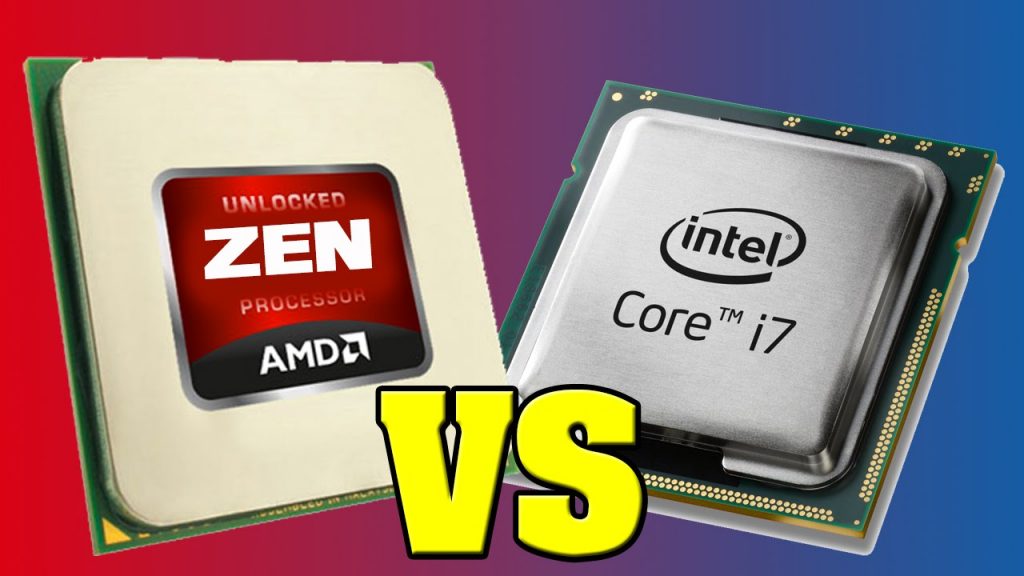 This is what both the Russian MCST and Oracle used in their time. Moreover, in the case of the latter, it is interesting that the SPARC M8 hardware supports the SQL language, as well as working with the main cryptographic protocols: AES, SHA, DES, MD5.
This is what both the Russian MCST and Oracle used in their time. Moreover, in the case of the latter, it is interesting that the SPARC M8 hardware supports the SQL language, as well as working with the main cryptographic protocols: AES, SHA, DES, MD5.
The SPARC M8 is a 32-core, 256-thread CPU running at up to 5GHz with 64MB of L3 cache. All this makes Oracle’s chips the best solution when working with databases, which are in many ways ahead of Intel and AMD, and that is why they are now widely used in servers running the Solaris OS.
Source: https://twitter.com/ericbezille/status/909836598228979712?lang=ru
As already mentioned, the MCST adopted the same practice of using open architecture SPARC — but with less success. 4 processor cores at a frequency of 1 GHz, a DDR2 memory controller, a 90 nm process technology looked very weak even at the time of its entry into the market in 2015 — it is not surprising that as a result the initiative was curtailed and completely focused on Elbrus processors.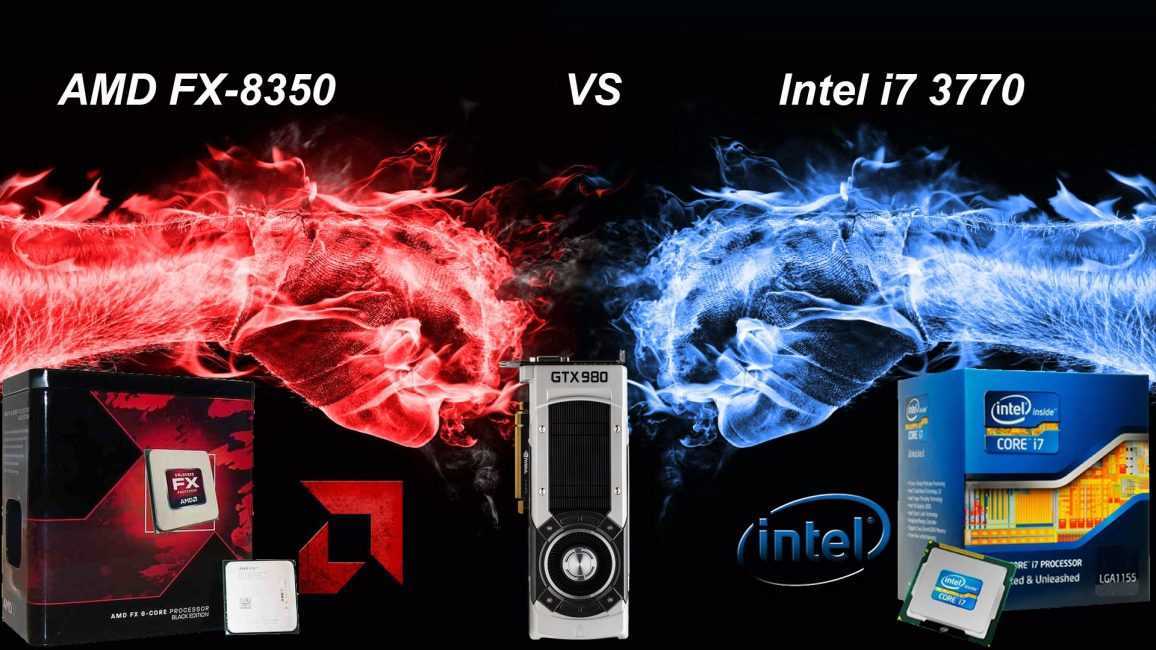
SHAKTI: Indian Open Architecture Chips
Another open CPU architecture, RISC-V, formed the basis for the development of the Indian Institute of Technology. The project is funded by the Indian Ministry of Electronics and Information Technology. The development of the Shakti processor started in 2016 and was introduced in 2018.
The latest Shakti E series processors are built on a 180nm process and operate at clock speeds up to 100MHz. They are the basis for embedded solutions such as robotic platforms, motor controllers, sensors, and more. But this is not the only development of the company. For example, class I is a 64-bit CPU with a frequency of 1.5 GHz to 2.5 GHz, supports multi-threaded computing and is intended for mobile devices, storage systems and active network equipment. At the same time, its improved version — class S — is designed for servers and workstations.
The Institute is also developing other experimental classes. While Shakti IP is being developed with government funding, InCore Semiconductors manufactures custom Shakti chips for a limited private sector clientele.
Of course, it will be some time before the Indian semiconductor industry catches up with Intel or even Zhaoxin. But the foundation for it to occupy its niche in the market has definitely been laid.
Source: https://www.indiatimes.com/technology/news/how-shakti-the-indian-processor-from-iit-madras-could-challenge-global-majors-intel-amd-357657.html
Afterword
Intel and AMD continue to dominate the desktop processor market, and outside of China, the Apple M1 is now the only viable alternative. However, processor architectures around the world don’t end with x86 or ARM. IBM and MCST, India and China offer their solutions. Over time, the processor market has every chance of becoming even more diverse — even if the leaders remain the same.
How to replace Intel and AMD processors — what is the alternative after the ban in 2022
#Technologies
Share:
Alexey Borzhonov
Keystone Agency / Global Look Press
The two main processor manufacturers, Intel and AMD, suspended deliveries to Russia at the end of February. At first it was about the industrial segment, but then — about supplies in general.
At first it was about the industrial segment, but then — about supplies in general.
What are the alternatives to Intel and AMD — can they be replaced
Briefly : not yet.
These two companies occupy more than 99% of the market. This includes personal computers and game consoles. They have no real competitors whose original products would be used on the same scale.
Xbox, PlayStation, laptops from Lenovo, Asus, Acer and, until recently, Apple used processors from these companies.
Buy a laptop with up to 35% discount
In Russia, there are processors from Baikal and Elbrus, but they were intended primarily for government agencies, and not for the consumer segment. And now their production is completely in an uncertain status — they were produced at the factories of the Taiwanese TSMC, which suspended cooperation with Russia.
RBC wrote that the developers of Baikal and Elbrus could be included in the lists of backbone companies, which would allow moving production to China. But even if this happens, there is no talk of a full-fledged replacement of Intel and AMD yet.
But even if this happens, there is no talk of a full-fledged replacement of Intel and AMD yet.
There are articles in the media with reviews of Chinese Zhaoxin, Indian Shakti and other alternatives, but so far these processors are not available in Russian retail.
Are Intel and AMD sold in Russia — and will they be sold?
Prices for processors rose strongly in March, but by April 1st they had already decreased — some were even cheaper than at the end of February. All this happened despite the fact that the companies did not resume work.
Profile 3DNews analyzed prices: on average, they fell by 30%. The publication compared them in Citylink, NIKS, DNS, Online Trade and other sites.
Experts interviewed by T-Zh believe that the market is adapting, but not quickly. We need to rebuild supply chains because of the complexities of payment and logistics — this will take time.
Buy laptop up to 35% off
AMD Ryzen Processor
Keystone Press Agency
What will the shortage of Intel and AMD lead to
Briefly : to failures of various systems.
Most of the experts interviewed by Gazeta.ru talked about the dependence of Russian business on Intel and AMD processors. Stopping supplies will lead to a shortage, which there is nothing to compensate for yet.
Nevertheless, for the coming months, the Russians will have equipment that is already operating and accumulated reserves, so interruptions can be avoided at least for this period. If the deficit is not compensated, then companies will have problems with IT systems and business processes.
DPA / Global Look Press
Experts called investments in domestic processors the most preferable way out. But it is not yet clear how much time and resources will be required to fully replace Western counterparts. The largest Mikron plant in Russia produces chips at 65 nanometers, while chips at 5 or 7 nm are now considered top-end.
Andrey Evdokimov, CEO of Baikal Electronics, said in an interview from May 2021 that advanced chips are not needed in most areas.
